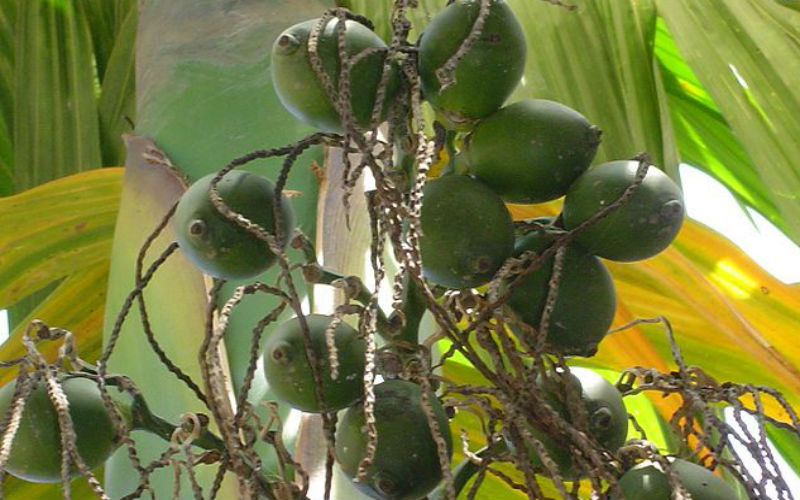Tourists visiting the Cordilleras are often curious how the natives “paint the town red”. No, it’s not the same as how Mr. Google would define it as “to go on a spree” or “to get drunk”. In the Cordilleras, they literally paint the town red. Going further into the rural areas, unfamiliar people would be shocked with sights of reddish stains on the floor. Some might even think that a blood bath happened recently in the area. Relax; these are spits of betel nut or what the locals would refer to as “nganga” or “moma”.
Betel Nut is a seed of the Areca catechu, which is a type of a Palm Tree. Tribes from tropical areas specifically, South and Southeast Asia and the Pacific have passed on through generations the custom of chewing betel nut. It is usually sliced then combined with slaked lime known as “apog”, tobacco and other spices and wrapped in betel leaves which is also known as “gawed”. Betel nut is considered to be the fourth most addictive substance in the world after nicotine, alcohol, and caffeine. Though chewing betel nut is a part of the culture and tradition of some tribes, there are strong and growing evidences of serious health problems from frequent and regular use.
People chew betel nut from claims that they get a sense of well-being and in addition their hunger is satisfied and their breath is sweetened. This nut is also used traditionally as a medicine to relieve some ailments from digestive problems to cardiovascular illnesses and it is even said that it has some cancer-fighting properties. But these still need further research to prove them.
On the other hand, “nganga” was also classified by the World Health Organization (WHO) as a carcinogen. Studies show that chewing betel nut may cause mouth, esophagus laryngeal and lung cancers. It can also cause oral submucous fibrosis, diabetes and hypertension, precancerous lesions, withdrawal symptoms in newborn, and tooth destruction. It acts as an Amphetamine which is a stimulant and just like it, betel nut is addictive. Its effects are more harmful than beneficial.
The WHO released an action plan back in 2012 to raise awareness and to reduce its use. Betel nut is considered in the United States as harmful for eating or chewing. They even listed it under the Poisonous Plants Database. In addition, Taiwan has an annual “Betel Nut Prevention Day” and requires chewers to attend withdrawal classes.
This is a health risk the country should also consider. As this is considered to be a part of some cultures, children start chewing betel nut in young ages. Similar to tobacco, betel nut should also be restricted in use, health wise and sanitation wise.
By: MAE FATIMA COSALAN
















How to work a framework of chewing beta nut